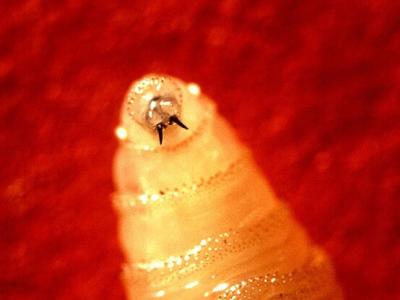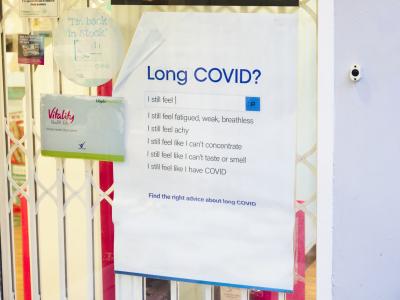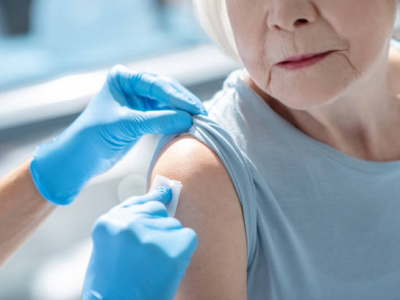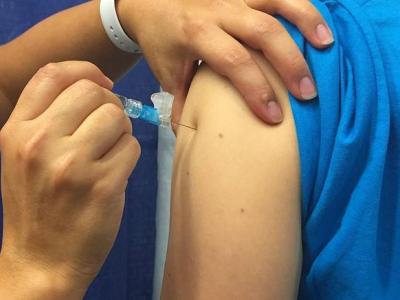May 22, 2006 (CIDRAP News) – Clinicians should use oseltamivir (Tamiflu) as first-line treatment for H5N1 avian influenza, but they should consider giving one of the older antiviral drugs along with it in some circumstances, the World Health Organization (WHO) recommends.
In new guidelines issued May 19, the WHO also said physicians should consider using one of the older drugs—amantadine or rimantadine—as first-line therapy if newer drugs are not available and surveillance indicates local strains of the H5N1 virus are susceptible to the drugs.
"This is the first time we clearly state the possibility of dual therapy to be considered in case you are facing an H5N1 outbreak," said Nahoko Shindo, a WHO medical officer who helped draw up the guidelines, as quoted in a May 19 Reuters report.
The guidelines address the use of the neuraminidase inhibitors (NIs), including oseltamivir and zanamivir (Relenza), and the M2 inhibitors—amantadine and rimantadine—in treating patients with known or suspected H5N1 infection. The M2 inhibitors, also known as adamantanes, are cheaper than the NIs, but they have not previously been recommended for use in H5N1 cases because the likelihood of viral resistance was considered too high.
However, recent data suggest that some strains of H5N1 are susceptible to the older drugs. An analysis of more than 600 H5N1 viruses collected in Southeast Asia showed that most samples from China and Indonesia lacked genetic characteristics signaling resistance to amantadine, whereas most samples from Vietnam, Thailand, and Cambodia had those characteristics. The report was published by the Journal of Infectious Diseases.
The new WHO guidelines were drawn up by an international group of clinicians with experience treating H5N1 patients, along with other experts, at a meeting in late March. The panel systematically reviewed and graded the evidence for the drugs' effectiveness.
Evidence rated as slim
Since no results from controlled trials of medication use in H5N1 cases are available, "Overall, the quality of the underlying evidence for all recommendations was very low," the 138-page WHO report states. The evidence includes results of lab and animal studies and indirect evidence from studies of antiviral use in patients with seasonal influenza. The recommendations are classified as "strong" or "weak," depending on the quality of the relevant evidence.
The WHO says that if a patient has a confirmed or strongly suspected H5N1 case and NIs are available, "Clinicians should administer oseltamivir treatment (strong recommendation); zanamivir might be used as an alternative (weak recommendation)."
Oseltamivir comes in capsule form, whereas zanamivir is taken with an inhaler. The WHO says zanamivir has lower bioavailability outside the respiratory tract than oseltamivir, but it may be active against some strains of oseltamivir-resistant H5N1 virus.
The guidelines say clinicians should not use amantadine or rimantadine alone as first-line treatment if neuraminidase inhibitors are available. However, "Clinicians might administer a combination of a neuraminidase inhibitor and an M2 inhibitor if local surveillance data show that the H5N1 virus is known or likely to be susceptible (weak recommendation)."
If clinicians try this combination therapy, they should collect "detailed and standardized clinical and virological data" from the start of treatment, the document adds.
If NIs are not available, the WHO advises, "Clinicians might administer amantadine or rimantadine as a first-line treatment if local surveillance data show that the H5N1 virus is known or likely to be susceptible to these drugs (weak recommendation)." The report adds that rimantadine generally has a better side-effect profile than amantadine.
The guidelines say that for now, the recommendations on using antivirals for treatment of H5N1 cases are the same as those for early treatment of adults and children with seasonal influenza.
However, the US Centers for Disease Control and Prevention advised physicians last January to stop using amantadine and rimantadine for the rest of the flu season, because the dominant flu strain had become highly resistant to them. More than 90% of influenza A(H3N2) isolates had become resistant, the agency said at the time.
Preventive use of antivirals
The WHO also issued recommendations on preventive use of the antiviral drugs in people with potential exposure to H5N1 (postexposure prophylaxis).
The agency said that where available, oseltamivir or zanamivir should be used preventively in high- and moderate-risk exposure groups, including pregnant women, continuing for 7 to 10 days after exposure. The drugs probably should not be used prophylactically in low-risk exposure groups, the document says. High-risk groups are defined as household or close family contacts of a strongly suspected or confirmed H5N1 patient.
Amantadine and rimantadine should not be used preventively if NIs are available, the WHO advises. But if NIs are not available, the older drugs could be used in high- and moderate-risk groups if local surveillance data show that the virus is likely to be susceptible to them.
The WHO authors also looked at the possible use of other supplementary treatments in H5N1 cases, including corticosteroids, immunoglobulin, interferon, and ribavirin. "There was no basis to make a recommendation for use of any of these medicines outside the context of a randomised trial, but ribavirin particularly should not be used in pregnant women (strong recommendation)," the report says.
See also:
Full text of WHO guidelines
http://www.who.int/medicines/publications/WHO_PSM_PAR_2006.6.pdf
May 12 CIDRAP News story "Study suggests older antivirals could help fight H5N1"



















